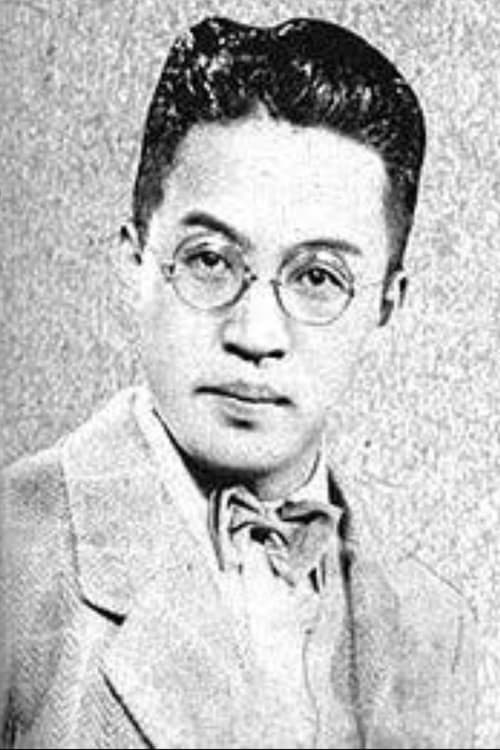
Munenori Yagyû
Fifteen years after Ishida Mitsunari lost in the battle of Sekigahara, Tokugawa Ieyasu foresees his unavoidable battle with Toyotomi Hideyori and goes into Fushimi Castle. At the night, Hattori Hanzo, the leader of 36 Iga members who were performing as guards of the castle, perceives the existence of a ninja and captures the mysterious sneaker.

The second film in the 20 Duels of Young Shingo trilogy directed by Sadatsugu Matsuda.
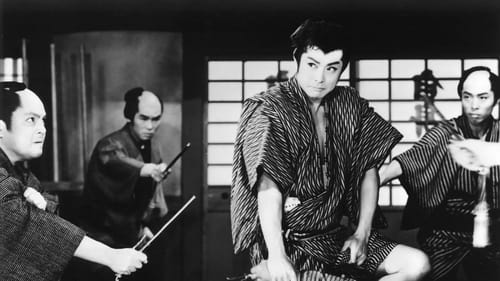
Young Lord Taihei goes to Edo to find the lost family treasure, a plover incense burner, under the disguise of a ronin.
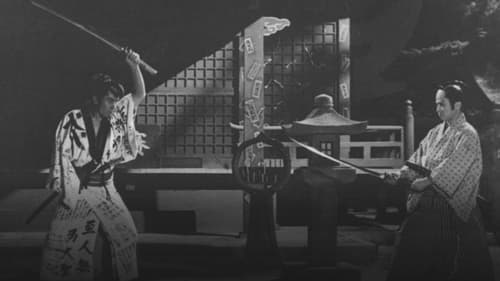
Gamo Taiken
Tange Sazen interferes with an evil plot against the Iga Yagyu family.

A story about a tomboy, Otoshi, who is good at singing, dancing and fencing.
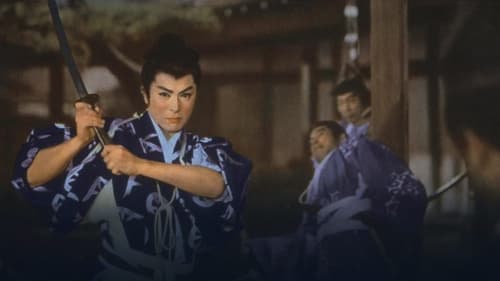
The epic battles between the Heike and Genji (Taira and Minamoto clans) take centerstage as the defeated leader of the Genji, Minamoto Yoritomo resolves to end his clan's exile and avenge the brutal loss in December, 1159 as they had fought under the white banner of the Emperor, while the Taira fought under their red flags in a battle to the death. The fight only took one day, with the Genji suffering utter defeat which led to their exile. His father, Yoshitomo, took responsibility for the loss and rather than live in humiliation, he decides to commit suicide with all his sons following him. However, the bravest warrior among them, Yoritomo stands tall and declares that he will not kill himself, but rather will fight to restore the clan.

Toei’s 10th anniversary film, featuring an all-star cast from the golden movie era of the 1960s. A famous story of the 47 loyal samurai. When Lord Asano is unjustly executed, his loyal retainers strike back for revenge.

With plenty of action, and a strong story about the growth and development of an expert swordsman, who just happens to be from an extremely privileged background.

Mito Komon
Counselor Mito and his companions departed from Mito to see Kikutaro, a young lord of the shogun family, who became the new lord of Shirataka castle with an income of three hundred thousand koku. As they approach Shirataka's domain, a disturbing adventure begins. Soon, the advisor Mito and his companions reveal a conspiracy whose purpose was to capture the Shirataka castle and engage in a battle with the villains.
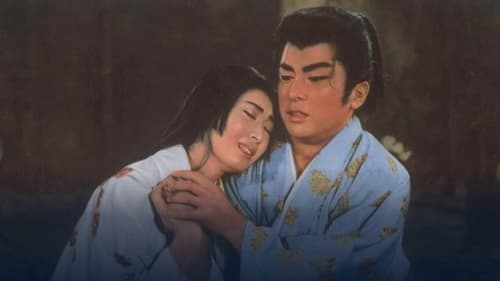
In 17th century Japan, Young Lord Masato returns after years abroad to find everything changed: his peace-loving father has died in what he soon finds to be mysterious circumstances, and his mother's married to his uncle, whose ruthless ambition is causing turmoil in the kingdom. Not knowing who to trust, Masato feigns madness, vowing to get to the truth, even though his act causes distress to the girl he loves, who's waited for him all these years. The ghost of his father turns up now and then to show him the way. Meanwhile a peasant revolt is brewing... It all ends tragically.
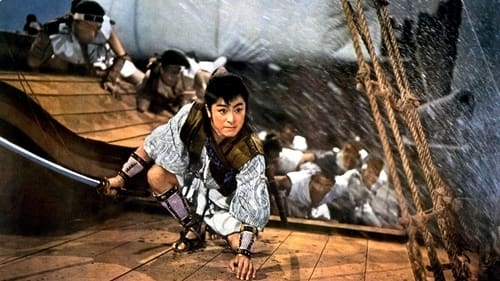
Tsuboya Dokyu
Historia de piratas y Samurais...

Jidaigeki film from 1960

One of Japan's most enduring stories is the true-life yakuza boss Jirocho of Shimizu and his gang as they took over the Tokaido Highroad and went on to everlasting fame. Many of the gang members have become household names although their backgrounds and how they came to join the group are mostly lost in the mists of a time gone by. This is the tale of Masa, who arrived in Shimizu Port hungry and down on his luck. His adventures contain some light-hearted moments as he meets up with the other gang members and goes on to join the group and become one of their best swordsmen. A truly exciting tale starring the ever-popular Okawa Hashizo along with all-time great Okochi Denjiro.

Chambara, comedia y musical, con tanta acción como dulzura y buen humor. La peli es la historia de Ishimatsu, un joven que se ve envuelto en una venganza entre clanes yakuzas y el rescate inesperado de una pequeña princesa. Está protagonizado por una actriz de culto como Hitori Misora, haciendo este papel masculino, lo que agrega un particular encanto, sumado a la presencia del legendario Tomisaburo Wakayama (Lone Wolf and Cub). Absolutamente flipeantes las imágines fantásticas del viaje en tortuga al Palacio del Dragón, en el fondo del océano, con un musical deliciosamente bizarro acompañado por el Bolero de Ravel.
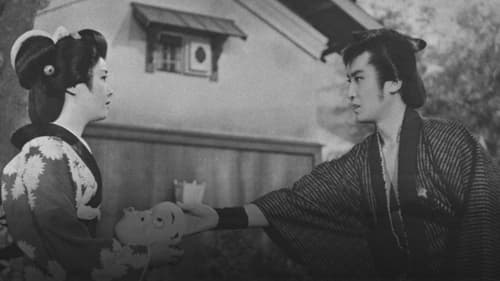
Boss Tora
Tossing his hat in the air to pick a direction, Yataro the wanderer sets out on a journey of adventure, not knowing what tomorrow may bring. The son of a Hatamoto, he has left the samurai life and become a yakuza, gambling on life's fortune and ready to risk his life at a moment's notice. Featuring an all-star cast that includes the debonair Azuma Chiyonosuke, this is a tale of excitement and action that brings the best of black and white to the silver screen. An adventure like no other, this is one of Kinnosuke's lost gems. A series of mishaps leads Yataro to watching over the beloved daughter of his close friend.
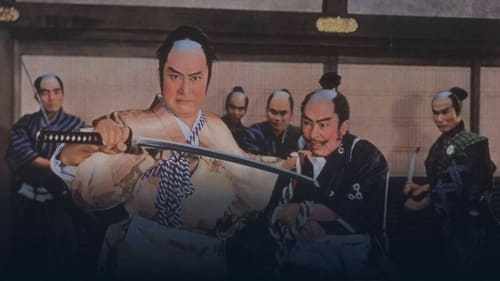
A young lord lives against the will of his father Lord Tokugawa.

El regreso del espadachín de un solo brazo, también conocido como el regreso del espadachín de un solo brazo, es una película de wuxia de Hong Kong de 1969 dirigida por Chang Cheh y producida por Shaw Brothers Studio.

While on the road, famed Yakuza Boss Jirocho is falsely accused of starting a peasant's uprising and chased by the law. Meanwhile, one of his henchmen in an attempt to raise money for the Boss gambles away not only all their funds, but their clothing as well. Jirocho, famed for his honesty and integrity must take on the challenge of rival gangs while trying to elude the government's officials at the same time. Things really heat up when the most famous of all Yakuza Bosses, Chuji of Kunisada gets involved. Will he team up with his old friend or is gang warfare about to erupt?
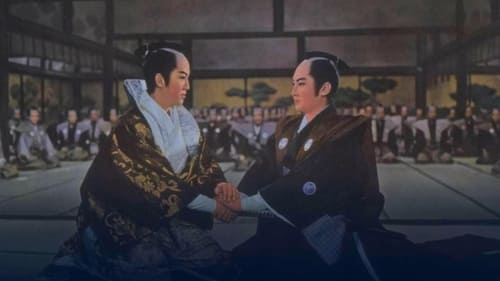
On New Year's Day 1716, Munenaga of Owari and Yoshinao of Kii were both named as candidates for the title of 8th Shogun. The wise and just Munenaga is plunged into a dispute with Tokugawa Yoshinao that will lead to one of them ascending the throne. This is an exciting and informative film that brings the brilliant history of Japan to the surface in a new light.
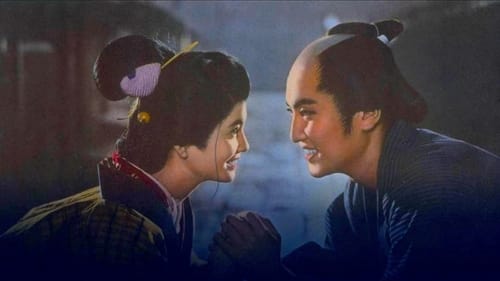
In the third entry into this mega-hit series, Isshin Tasuke, a spirited fishmonger in Edo who looks just like Shogun Iemitsu undergoes a series of unforeseen troubles in his newly wedded life.
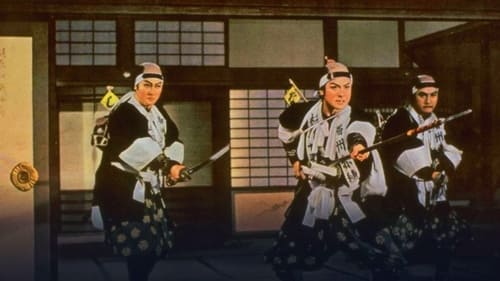
Edo, 1703. Young Sugino, one of the 47 rōnin seeking revenge against lord Kira, who caused that his master, Asano of Ako, committed seppuku, meets a skillful spear fighter, Genban, who trains him to fight with honor on the day of retribution.
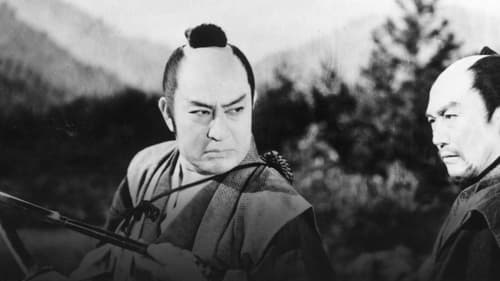
A story of revenge between two samurai families on the Igagoe Road. Araki Mataemon born in the province of Iga. He studied the art of the sword under the Yagyu family. He helped the younger brother of his wife Watanabe Kazuma take revenge on his enemy Kawai Matagoro. Ichikawa Utaemon plays Araki Matemon and his son Kinya Kataoji plays Kazuma.

An adventure of a feisty girl Oyuki and Santa, a homeless child she saves.
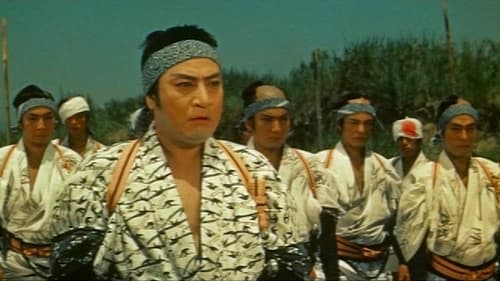
One of the great stories from Japan’s rich history comes to life in this true tale of the bloody showdown between two rival yakuza gangs in the 1840’s. The battle between Boss Sukegoro of Iioka and Boss Shigezo of Sasagawa has been portrayed many times, most notably in the first Zatoichi film, where the blind man befriends the tubercular ronin Hirate Miki, before cutting him down in one of the great duels in cinema history. This all-star extravaganza pulls out all the stops, with appearances by virtually all of the great actors and actresses from Toei’s studio at the time. Ichikawa Utaemon’s portrayal of the kind-hearted, noble yakuza boss Shigezo of Sasagawa contrasts sharply with the devious Sukegoro of Iioka. Corrupt as he may have been, his men were all willing to give up their lives for him.

Master swordsman and loyal vassal Saotome Mondonosuke goes on a mission to find a missing princess.

Kansuke
During the latter part of the 16th Century, Japan's Warring States era was coming to a close. After crushing almost all of his enemies, Date Masamune aka the "Hawk of the North" sets his eyes on Hatakeyama's lands. The young warlord is about to face his greatest challenge.

Kinpira
With flashing swordwork and a terrific story, wandering gambler Kusama Hanjiro inspires the wrath of Boss Jirotaro who has been terrorizing travelers along the route through his territory. When Hanjiro steps in to gamble with him one-on-one it leads to a deadly vendetta that will show no mercy. Along the way Hanjiro is called upon to help sisters with no one else to depend on. Will the feud end in tragedy, or can the honest wanderer prevail against the bloodlust of an angry yakuza boss whom he had scarred for life?

Princess Kazu, the daughter of Shogun Ienari, is sent to marry Matsudaira Nobunao, master of Peacock castle in Kozuke province, a domain of 17,000 koku. When the procession carrying her sizable dowry was so large that it was expected to take 30 days to reach the castle the members of the clan were surprised to learn that it contained only her barest essentials! Would her presence create a problem too large for the clan to deal with? And having been trained by Lord Yagyu himself, will her martial skills ruin the marital plans set forth for the couple, or can she be tamed in time for the wedding?

When an altercation with a gangster forces Kikutaro to leave Edo, he is sent by his father to Hamamatsu to find a better direction in life. However, trouble seems to follow Kikutaro on the road leading him eventually to come face to face with his rival, Gonkuro.

In this film in the long running series, Tange Sazen and his friends are asked to guard a dragon-shaped incense burner that holds the key to hidden treasures. This is the most exciting film in the series, and contains some of the best action sequences of Otomo's distinguished career. Sazen is the strongest swordsman of his time, and his sense of honor and justice are called upon more than once to set things right.

Fearless girl firefighter Oharu and skilled firefighter Shintaro battle against their evil rivals who threaten to take over Oharu’s family’s turf.

Jinba Yajuro
Four thousand gold coins were stolen from the vault of Nijo Castle in Kyoto, which were collected as a tax to the shogun. The guard of Nijo castle Asaka Keinosuke, disguised as a komuso monk, proceeds to investigate the theft, traces of thieves lead to Edo, where Asaka goes.

Kataoka Chiezo stars as Murasaki Zukin, a mysterious hero of the people who helps those in need. Now under the rule of the evil Tanuma, the people look to Murasaki Zukin more than ever, to confront and punish those who bring misfortune upon the commoners. Will he be able to bring peace to the land? One of the greatest actors from Toei Studios, known mainly for his swashbuckling roles as powerful swordsmen such as Ryunosuke in SOULS IN THE MOONLIGHT, he appeared in 325 films both before and after the war, beginning with CHUSHINGURA in 1928, and including KUNISADA CHUJI in 1933, and DOKUGANRYO MASAMUNE. While best known for his swordplay, Chiezo really did not enjoy the action, but was able to use his menacing presence to stare down his adversaries. Although Kataoka Chiezo passed away in 1983 at the age of 79, he still has many fans today. This film shows him at his best.
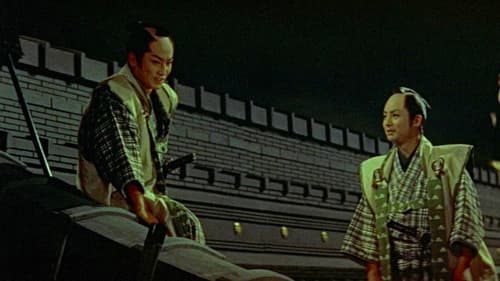
Best friends Gentaro and Sanpei become fateful enemies when Sanpei steals a secret document revealing the identity of the chosen successor to the Tokugawa Shogun. Gentaro of the Owari clan sets out to retrive the invaluable document.

Sinza who is secretly the well known "Sea Glow Burglar", gives to the poor the money he takes from the bad lords and greedy merchants, who live just to exploit the poor for their small coins. On his travel he meets a man and his little girl Onatsu. The man gets ambushed and killed in front of his daughter, so Sinza promises the man he will take his daughter safely to their destination, so the little girl is now his responsibility. The kind, non-violent Sinza now finds himself entangled in something far bigger than he expected.

Dos princesas gemelas son separadas al nacer pues existe la creencia de que los gemelos traen mala suerte a la familia. Son criadas por separado. Yukihime, la gemela que fue enviada a Edo para ser criada por una familia yakuza regresa después de muchos años.

Gamo Taiken
One of Japan’s most popular folklore characters, Tange Sazen, the one-eyed and one-armed swordsman, must rescue the Yagyu clan from the treachery of a master plotting to take control over a sword fighting school.

Geki Kitazaki
Light-hearted samurai comedy. The second son of a feudal lord runs away from an arranged marriage. He saves the life of a princess whom he gets to fall in love with. It turns out that she is just his prospective bride.

Lord Yagyu
Continuación de la historia de "Ninjitsu", realizada un año antes por el propio Hiroshi Inagaki

Toyotomi Hideyoshi
Durante la Era de las Guerras (Era Sengoku), Tokugawa Ieyasu y Toyotomi Hideyoshi compiten por el poder y cada uno usa sus armas secretas para tratar de derrotar al otro. Momochi Sandayu de Iga, junto con su discípulo Ishikawa Goemon, reciben la orden de Ieyasu de asesinar a Hideyoshi y obtener los planos de la fortaleza oculta dentro del Castillo de Osaka. Mientras tanto, el grupo Koga se organiza para tratar de defender el castillo por la paz de la nación. Superando todos los trucos de Sandayu, Torawakamaru protege el dibujo, y cuando Ieyasu descubre una manera de mantener un combate entre Koga e Iga, los dos maestros luchan en la batalla ninja más grande jamás celebrada. Los efectos son realmente espectaculares en esta clásica película de ninjas de Toei.

Toyama Kinshiro, a commissioner from northern Edo, goes undercover to unravel the mystery behind a series of murders. Kinshiro, played by Kataoka Chiezo, is most famous for the cherry blossom tattoos on his shoulder which he reveals at the moment of judgement.

Romantic comedy.
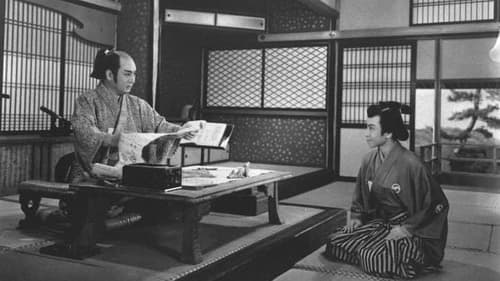
The year is 1805. Napoleon ruled Europe. Ienari is the 11th Tokugawa Shogun. An incident, which was an open official secret, took place on the foothills of Mt. Fuji. Fearing attacks from within and without, the Shogunate planned to build a training castle utilizing the most advanced techniques. Two master castle architects, Sato Kikutaro and Kumai Hakuten, were selected to compete for the honor of building this castle. Lord Mizuno Dewa has even ordered the townspeople to assist both sides with their land surveys and preparations. This leads to fear on the part of farmers that their land will be taken away from them, and sets off a series of events which rock the nation to its very roots. With an all-star cast, this is an important story with relevance to current times. One of Ichikawa Utaemon's finest performances, a true classic!
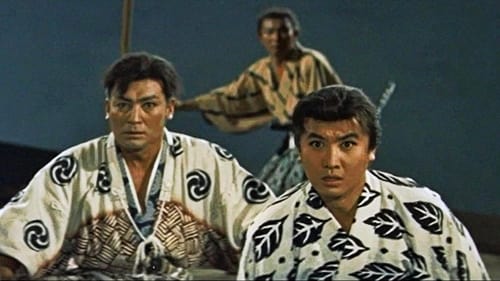
Jubei
Jiromaru (Kinnosuke Nakamura) investigates the dark "Ghost Ship" in search of his father. Meanwhile, Princess Yuki (Yumiko Hasegawa) and Chacha (Eiko Maruyama) are kidnapped by pirates, so after dedicating himself to rescuing them for the second time, he decides to accept his grandfather's challenge to become a navigator, just like his deceased father.
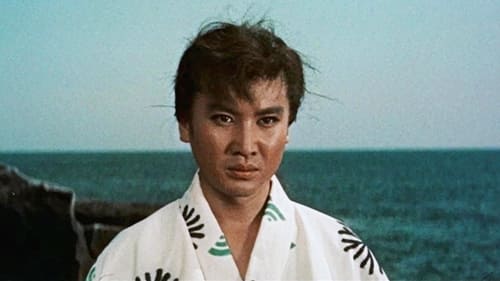
Jubei
As Part I opens, Jubei (Denjiro Okochi), the best of sea skippers, is unable to overcome the stormy seas of Luzon. All hands on board the Kannonmaru were lost except for Shinkei, who alone made his way to land & eventually home to inform his grandson Jiromaru (Kinnosuke Nakamura) that his father Jubei met with disaster. Young Jiromaru tells his grandfather that he doesn't want to be a skipper like his father, but wants to go to Kyoto and become a samurai…

This most celebrated all-star movie version of the popular series features Tsukigata Ryunosuke as Mito Komon, the sage who wanders the countryside rectifying government corruption along with his faithful attendants Suke and Kaku.

First part of the famous Dai-bosatsu toge trilogy, based on Kaizan Nakazato’s unfinished long series of novels (41 books, written from 1913 to 1941). Set in the last period of the Tokugawa Shogunate, Daibosatsu Toge tells the story of Tsuke Ryunosuke, a nihilistic swordmaster who doesnt hesitate to kill anyone, bad or good. Despite the authors explicit refusal, the series were later made into plays and movies several times.

Lord Yagyu
In the Tokugawa Era, the clan of Lord Yagyu has hidden away three scrolls containing clan secrets which, if revealed, would cause revolution and disaster for the clan. The information is divided among the three scrolls, all of which must be possessed for the secrets to be understood. When Princess Yuhime steals the scrolls, Tasaburo, a samurai with magical powers, and his brother Senshiro are sent to retrieve them.
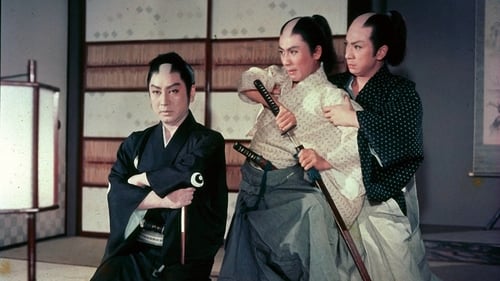
Gensai Mamiya
During the bloody era of the Tokugawa Shogunate collapse, a man appeared capable of overthrowing a corrupt government and ending the feud between the Choshu and Satsuma clans. This is the story of Tsukigat Khanpayit, the sword maker of the Choshu clan, who, along with Katsuro Kogoro and Sakamoto Ryoma, sought to fulfill the dream of a new peaceful era in Japan. Can he realize his ideals or will he die in the chaos of internecine fights...

The 40th and final "Tengu Kurama" feature starring Kanjuro Arashi.

Ninja film by Tai Kato

A Japanese drama featuring the one-eyed, one-armed swordsman

Japanese film released to commemorate the 7th anniversary of Shintoho's founding.
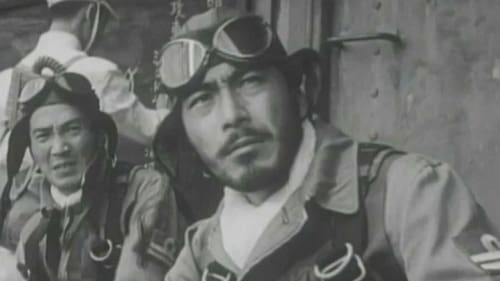
Grand Admiral Isoroku Yamamoto
Admiral Isoroku Yamamoto, a brilliant tactician, is a loyal subject of the emperor, despite his grave misgivings about leading Japan's navy into war with the United States. He opposes the attack on Pearl Harbor, but, overruled, he leads his forces to the best of his ability.

Oishi
Jidai-geki by Kiyoshi Saeki
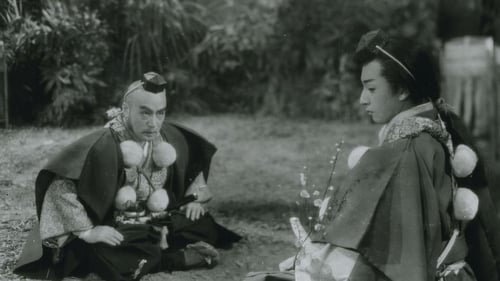
Benkei
Japón medieval. Un samurai huye de su hermano. Tanto él como sus guardaespaldas tienen que disfrazarse de sacerdotes para atravesar un bosque y eludir a los guardias de la frontera.

Dedication of the Great Buddha is a 1952 Japanese film directed by Teinosuke Kinugasa. It was entered into the 1953 Cannes Film Festival.

Tras el estallido de la Guerra del Pacífico, la industria del cine japonés sufre notables recortes. Numazaki, un guionista mediocre, está expuesto a un despido inminente. Su esposa Takako le anima a buscar trabajo en Kyoto. Pero Numazaki falla en su prueba de aptitud, en la que se le pedía escribir un guión para el famoso, pero exigente, director Sakaguchi (una referencia velada a Kenji Mizoguchi). Takako, durante un año, anima y apoya a su marido para que pueda perfeccionar sus capacidades a partir de ese fracaso...

Genji, the illegitimate offspring of a Japanese potentate, goes by the philosophy of "love 'em and leave 'em" as a matter of course. Only when his heart is broken by Awaji does Genji realizes how much pain he himself has caused.

Set in the Edo-era, a smuggling vessel runs into conflict between the Matsumae clan and the Ainu in Hokkaido.

A village struggles to survive when the nearby lake becomes barren of fish.

Saheita Sugimoto aka Shôsuke Ohara
Saheita, the final heir of a once rich and respectable family, can't refuse the many villagers that come to him for favours and money, even though he is on the brink of bankruptcy. Around town he is better known by his nickname Mr. Shosuke Ohara.

Tanuma Kandayuu is a high class samurai of the house of Nabeshima. He finds a lavish board of Go (a Chinese Board game) at Kinbei's store. He recommend Kinbei to offer it to his lord. Kinbei hesitates at first, since he knows the board has a mysterious legend surrounding it; it's believed that for every game played on the board, one death is required.

Saheiji
The purple hood reveals the embezzlement of public money by officials. A remake of Masahiro Makino's 1923 film.

Kôfuku eno shôtai - Invitation to happiness

Jidai-geki by Ryo Hagiwara
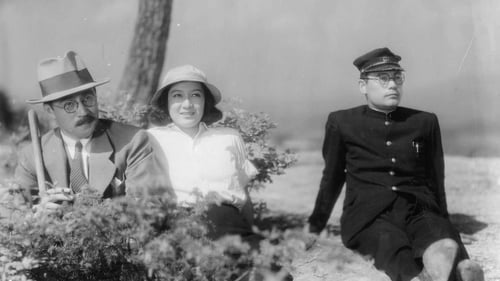
Professor Yagihara
Yukie, hija de un profesor universitario, se queda conmocionada cuando su padre es expulsado de su cátedra por sus enseñanzas políticas, pero mucho más aún cuando su novio es arrestado y ejecutado bajo la acusación de espionaje.

Lord for a Night is a 1946 Japanese film directed by Teinosuke Kinugasa.

Hozoin Kakuzenbo
During the Warring States era, Hozoin Kakuzenbo and Yagyu Tajima-no-kami, being best friends, spend their days acquiring skills of the spear, sword and martial arts. Hozoin loses a series of matches with master swordsman Kozumi Ise-no-kami. Bitterly ashamed, Hozoin embarks on a journey, trying to perfect his skills. A few years later, Hozoin is ready and it's time for the ultimate showdown with Ise-no-kami!

Shogoro Yano
Sanshiro Sugata tiene que enfrentarse a nuevos retos y luchar contra adversarios cada vez más difíciles, pero no por ello dejará de aprender, a través de las artes marciales, una filosofía que le permitirá orientar su vida.

Three IJN flyers Mikami (Susumu Fujita), Kawakami (Masayuki Mori) and Murakami (Akitake Kono) are good friends, and they are all renowned for their torpedo techniques. Mikami is posted as a staff officer at a base on an island in the Pacific. Kawakami and Murakami later joins him as the base squardron is reinforced. The enemy task force approaches the island and all three of them attack the fleet, killing themselves in the process.

It is 1921 and a town has a newspaper which prints urgent bulletins as required. The Washington-based CITES treaty, in which Japan participates, puts a limit on the number of warships any country can possess. As a result, Japan has to decommission a ship to its makers' disappointment. An institute of technology's laboratory designs a new ship. Due to less ships, sailors have to retire and are also disappointed. The laboratory's manager and an admiral are visiting a patient at a hospital and meet coincidentally. The former has a daughter who worries about her father's workload. She asks him to accompany her to a concert. Father has little time, but is convinced for her sake. He is inspired for a ship's design at the performance. The film is inspired by the life of Jo Hiraga.
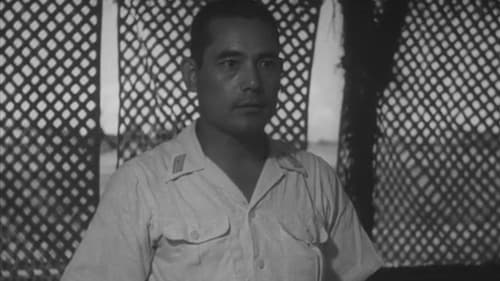
El Coronel Kato es un verdadero oficial que sirve a la Fuerza Aérea de Ejército Japonés Imperial en el Sudeste Asiático. Un oficial muy respetado por sus pilotos por su imparcialidad y su su excelente capacidad de vuelo. Su heroísmo y atractivos atributos físicos hacen de él un instrumento ideal para la maquinaria propagandística japonesa que encargó esta película a dos años de haber sido asesinado el Coronel Kato. No es un biopic de la vida y muerte de Kato. La película es más sobre el honor, el deber y la abnegación – esencialmente del liderazgo.

Captain Hayami
This film was made by the Japanese occupation authorities in the Philippines as a propaganda film to show the Philippine people the "benefits" of the Japanese invasion and takeover of their country.
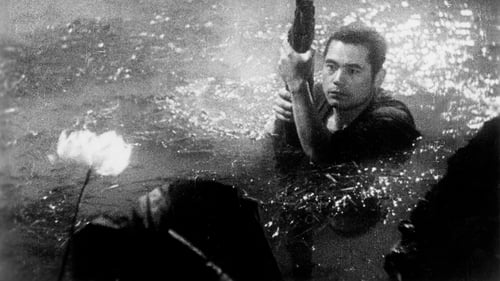
Shogoro Yano
1883, a principios de la era Meijii. Sanshiro Sugata es discípulo de Shogoro Yano, un maestro de judo. A lo largo de su aprendizaje y de sus combates aprenderá los principios y valores primordiales de una filosofía que le permitira guiar sus pasos en la vida.
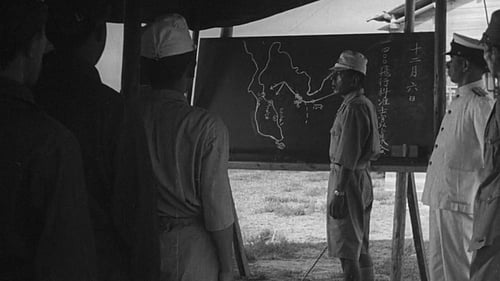
Satake
Japanese Navy air cadets train for the attacks on Pearl Harbor and the HMS Prince of Wales.

Shingen Takeda
This epic depicts the battle between Uesugi Kenshin and Takeda Shingen. The focus of the story is the struggle by the unit leader in charge of the main supply wagons and the supply troops to transport materiel to the Uesugi army. To this are added episodes involving an itinerant woman.

The story is based on the serial novel by Tsunoda Kikuo.

The story is based on the serial novel by Tsunoda Kikuo.

Fukuzawa Yukichi
Jidaigeki from 1940

Uehara Ittosai Nobushige
When Sentarô’s father is killed by a drunken samurai, Sentarô avenges him. His deed puts him on the run and leaves his sister behind. While running from both the authorities and the assassins, Sentarô meets with the beautiful travelling-actress Oshima who takes him under her protection.

Japanese adaptation of LES MISERABLES. The last film of director Itami took inspiration from Les Miserables. Transpiring during the Southwestern War of 1877 in Japan, which was the last civil war in the country, a criminal escapes prison only to be found by a monk. The criminal decides to turn a new leaf based on their conversation and goes on to become a town's mayor. He hears news of a mistaken arrest and identity. The revelation of truth is the start of a series of miseries.

Shimazu Nariakira / Masumitsu Kyunosuke
Japanese film.

Kuriyama Daizen
Prewar jidaigeki starring Denjiro Okochi

Ryunosuke Tsukue
The sequel to the 1935 film Great Bodhisattva Pass

1930s Japanese film.

Sazen Tange
Se habla de una vieja vasija con aspecto pobre que contiene un mapa indicando el lugar donde se oculta el tesoro de un millón de ryo. Desconocedor de este secreto, el hijo mayor de los Yagyu la regala a su hermano menor, creyéndola una baratija, y este a su vez la vende a unos chatarreros. Una serie de casualidades llevarán la vasija a manos de Yasu, un chico pequeño cuyo padre ha sido asesinado. Será Tange Sazen quien le de asilo en su casa, donde cuidará de él

Final installment of the Okochi / Arai / Yamanaka Mito Komon series and just as good as the others (a good deal longer, as well). Again, this film like the other two is similar in tone and spirit to the Yamanaka Tange Sazen film and would appeal to fans of that film.

Japanese historical film.

Adaptation of the novel by Osaragi Jirō. Again scripted by the legendary Yamanaka Sadao

Mitsukuni Mito/Jinzaemon Tachibana
Adaptation of the novel by Osaragi Jirō.

Directed by Daisuke Itō.

A lost film that tells a story of Jirokichi, a notorious thief

Jirokichi the Rat is a notorious thief. While on the run from the law, he discovers an unexpectedly honourable side of himself, and maybe some form of redemption.

A lost film telling a story of Jirokichi the Rat, a notorious thief

Bangaku Ajikawa
Yamanaka Sadao's fourth feature film. The Life of Bangaku

Tange Sazen

Jirokichi
Jirokichi the Rat is wanted in Edo for robbing the mansions of the rich. While on the run, he falls for Osen, a girl who has been sold to a brothel by her criminal brother, Nikichi. When he goes to find Nikichi, Jirokichi immediately falls for Okino, a poor girl who is also under threat from Nikichi.

Lost film, directed by Tomu Uchida. This film is a very funny comedy that makes fun of the moral code of the samurai Bushido, which has become obsolete and turned into an empty form during the period of feudalism.

A Japanese silent film

Tokijirō Kutsukake

Kita
Yaji and Kita: The Battle of Toba Fushimi is a 1928 Japanese film directed by Tomiyasu Ikeda.[1] This comedy film showcases the acting talent of Denjirō Ōkōchi and acts as a complementary film to Yaji and Kita: Yasuda's Rescue, which is part of the Yaji and Kita series. An 8-minute remnant of the film was released on DVD by Digital Meme with a benshi accompaniment by Midori Sawato. The version in the National Film Center is 23 minutes long.

Silent Japanese film.

Silent Japanese film.

Silent Japanese film.

The earliest existing version (incomplete) of Mito Komon history. It was one of the most famous (and most filmed) Jidaigeki stories. Lord Mito is the sage who wanders the countryside rectifying government corruption along with his faithful attendants Suke-san and Kaku-san.

A samurai comes to the aid of his uncle in a duel.

Kita
Yaji and Kita: Yasuda's Rescue is a 1927 black and white Japanese silent film directed by Tomiyasu Ikeda.[1] This comedy film showcases the comic talent of Denjiro Okochi, which contrasts markedly with his heroic performance in Oatsurae Jirokichi Koshi. The humorous exchanges with Goro Kawabe, his senior at Nikkatsu, can be priceless, with the expressions and movements of the two goofy characters making for pure, hilarious slapstick comedy. A 15-minute remnant of the film was released on DVD by Digital Meme with benshi accompaniment by Midori Sawato and Ryubi Kato.

Chuji Kunisada
The Japanese equivalent of penny dreadfuls glorifying Jesse James, A Diary of Chuji’s Travels gives a unique gloss to the tale of Chuji Kunisada, the legendary bakuto (or gambler, the precursors to modern-day yakuza). One of the two remaining segments of Ito’s original four-hour trilogy, it depicts Chuji’s attempt to save the geisha Oshina, a rebellion against the rigid social structure of Edo Japan. With socialist overtones, it’s a passionate artifact of early Japanese film.

For nearly 300 years, Japan had been hermetically sealed to the outside world. When, in that pivotal year of 1854, the American Admiral Perry took the direct approach that the Dutch had been unwilling to take, the ruling Shogun knew that the dynasty was over. As the shogun began to open up to the outside world, the Sonno Joi movement called for this to be reversed...

A Diary of Chuji's Travels is a silent Japanese jidaigeki made in 1927 starring Denjirō Ōkōchi and directed by Daisuke Itō. It was originally released in three parts, all of which were long thought to be lost until portions of the second part and much of the third part were discovered and restored in 1991. Since the film had once been voted in a 1959 Kinema Junpō poll as the best Japanese film of all time, its discovery was significant. At the time of its release, Itō was the leader of a new style of samurai films that featured outlaw heroes and fast-cut sword fighting scenes.

Chuji Kunisada
The first of Chuji's Travels.

Kazuma Iki
Set in the Edo period, the film deals with two brothers falling in love with the same girl. Sadly, only 12 minutes of footage survive.

